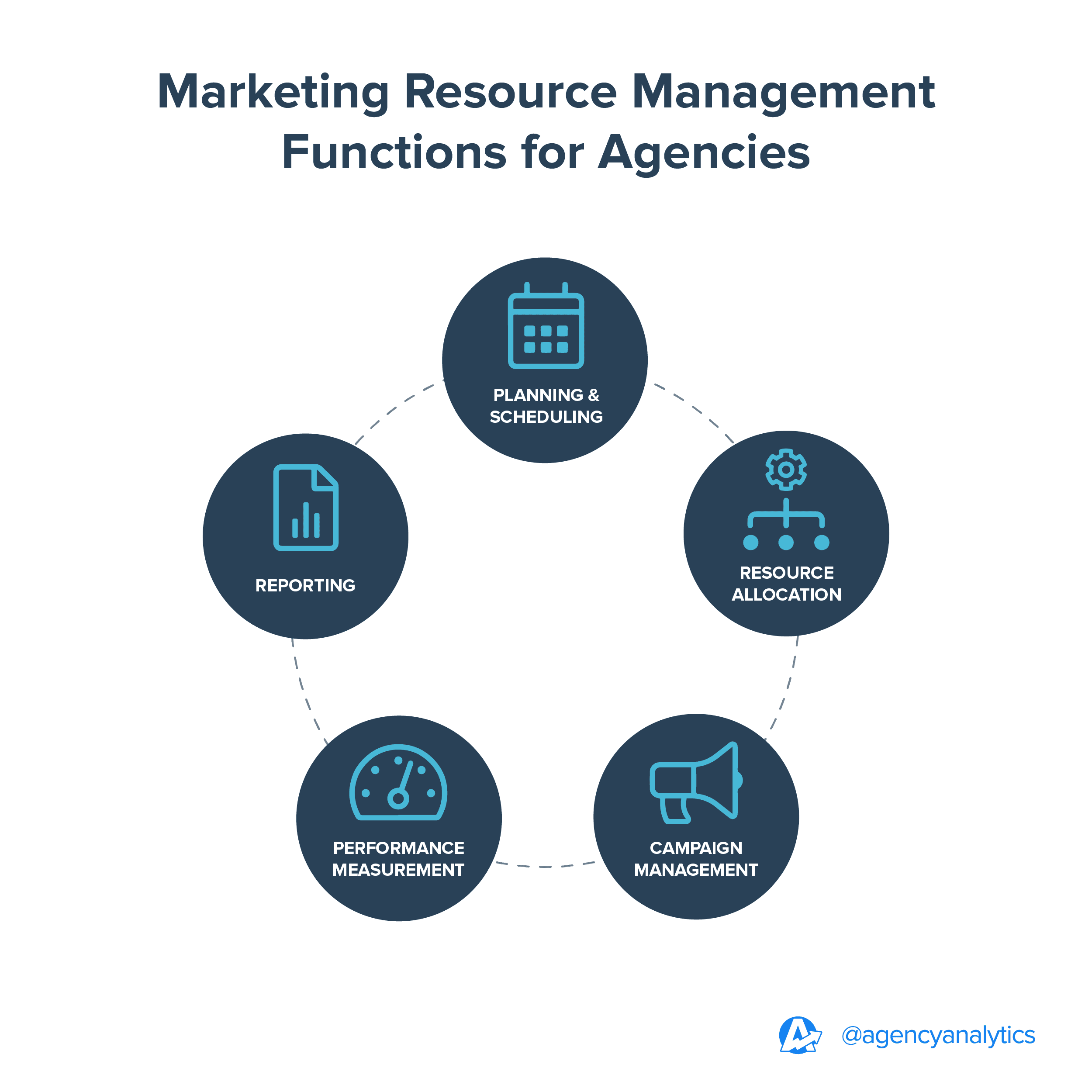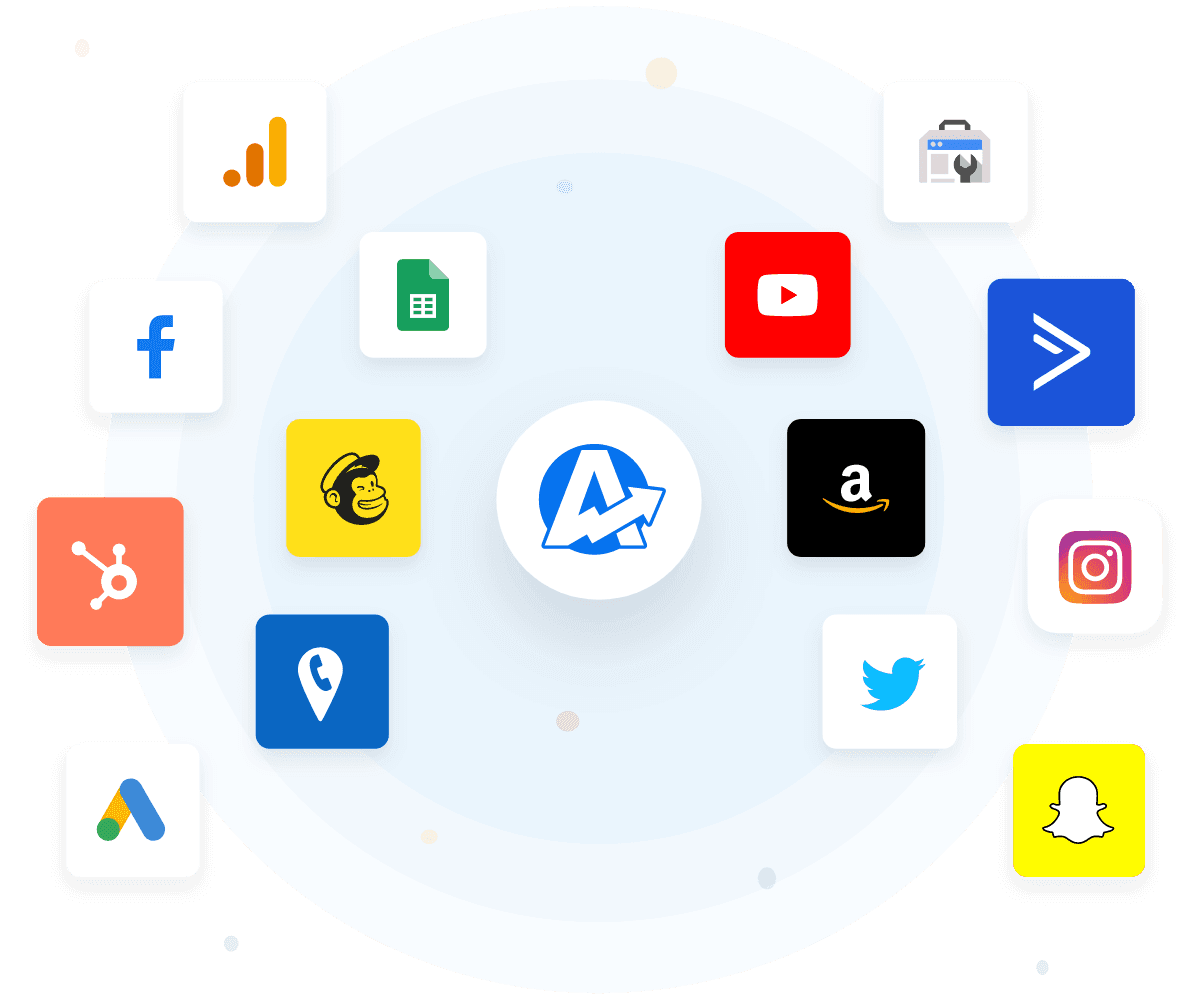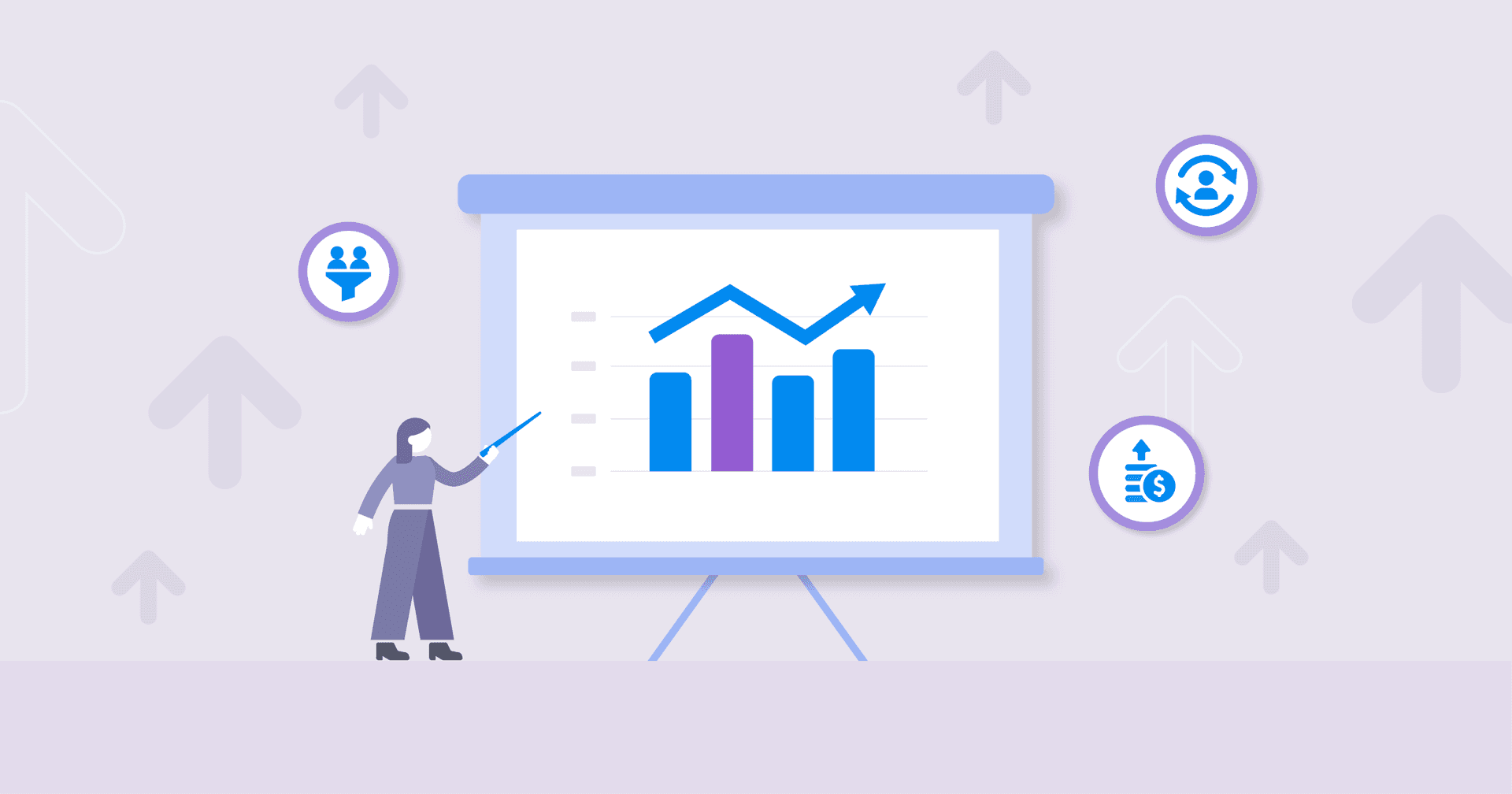Table of Contents
Table of Contents
- What Is Marketing Resource Management (MRM)?
- Why Does MRM Matter to Agencies and Marketing Campaigns?
- 8 Core Benefits of Marketing Resource Management for Agencies
- What Are the Challenges of MRM for Agencies?
- What Is Marketing Resource Management Software?
- Does Your Agency Need a Dedicated Marketing Resource Management Platform?
- How To Develop a Marketing Resource Management Strategy for Your Agency in 8 Steps
- Reduce Burnout and Enhance Performance for Your Agency
7,000+ agencies have ditched manual reports. You can too.
Free 14-Day TrialQUICK SUMMARY:
Discover how Marketing Resource Management (MRM) transforms your agency's efficiency. This guide covers planning, directing, and optimizing marketing resources. Discover how to manage digital assets, oversee timelines, and measure campaign performance to enhance your agency’s strategic capabilities and drive successful outcomes, based on the real-life advice of agencies like yours.
Running marketing campaigns requires a lot of effort and planning. To achieve success, agency leaders must ensure that marketing departments have all the elements necessary to ideate, create, and execute a campaign for a client in harmony.
Enter marketing resource management (MRM), the conductor that ensures every section of the marketing orchestra plays in tune and on time. Like a maestro planning all the minute swings and swells of a symphony, MRM coordinates all agency marketing activities, ensuring projects are executed in sync and resources are used efficiently.
Based in Irvine, California, GCC Consulting is an award-winning aesthetic medical consulting and marketing agency dedicated to elevating medical practices and spas. As managing director Gia Ching explains, tailoring marketing campaigns and strategies unique to each practice requires effective resource management to ensure every client’s objectives are met.
Resource planning and strategy enable GCC Consulting to adjust budgets and resources more efficiently by identifying needs and priorities, optimizing resource allocation, forecasting demand, mitigating risks, enhancing flexibility, improving decision-making, and measuring performance.
Gia Ching, Managing Director, GCC Consulting

Is MRM the solution your agency needs to streamline and optimize its operations?
In this marketing resource management guide, we’ll explain how MRM works, discuss its benefits and challenges for marketing teams, offer recommendations for tools and software, and give you best practices for implementing MRM to maximize your agency’s efficiency.
What Is Marketing Resource Management (MRM)?
MRM involves planning, directing, and optimizing the use of marketing resources to execute marketing strategies effectively. This includes managing digital assets, overseeing project timelines through integrated project management tools, budgeting resources, campaign planning, and measuring performance.

The goal of any marketing resource management system is to facilitate clear communication, perfect timing, and optimal performance—ensuring that every marketing campaign runs smoothly, meets its objectives, avoids wasting resources, and doesn’t overwhelm the marketing department or cause burnout among team members.
Proper resourcing has played a crucial role in helping our team avoid burnout and maintain a healthy pace of work in several ways. By accurately assessing project requirements and allocating resources accordingly, we ensure that workloads are distributed evenly and are manageable for each team member. This prevents individuals from becoming overwhelmed or overburdened with tasks.
Gia Ching, Managing Director, GCC Consulting
Why Does MRM Matter to Agencies and Marketing Campaigns?
MRM optimizes the use of every marketing resource within a marketing project and the agency—from human expertise to finances—and ensures these assets are used to their fullest potential. Using MRM means an agency will be better equipped to deliver projects on budget and on time, maximizing return on investment while minimizing waste.
By aligning resource allocation with strategic objectives, anticipating future demands, and proactively addressing challenges, we can maximize ROI and adapt quickly to changing circumstances, ultimately driving greater efficiency and effectiveness in achieving our marketing goals.
Gia Ching, Managing Director, GCC Consulting
Additionally, MRM helps maintain brand consistency and ensures compliance with industry regulations, essential for protecting the agency's reputation and building trust with clients.
8 Core Benefits of Marketing Resource Management for Agencies
Marketing resource management brings several key benefits to agencies and enhances their effectiveness and competitiveness. Here are some of the major advantages:
1. Enhances Efficiency
MRM tools streamline processes and the management of marketing resources, from budgeting and scheduling to asset management and utilization. This results in more efficient campaign execution, better media planning, and the ability to launch projects faster and on a larger scale without increasing errors or stress.
2. Helps Allocate Resources
With MRM tools and software, agencies gain clear insights into which resources are overused and underutilized. This allows for more precise resource allocation, ensuring that every dollar and every hour spent contributes directly to business goals.
3. Boosts Productivity and Creativity
By automating repetitive tasks and simplifying complex processes, MRM solutions free up team members to focus on higher-value activities. This boosts productivity and enhances creativity within teams, as they have more time to think strategically and innovate.
4. Improves Campaign Effectiveness
MRM involves tracking and analyzing marketing campaign performance. This data-driven approach helps agencies understand consumer behavior and market trends better, leading to more effective campaigns tailored to specific audience needs.
5. Helps Agencies Scale
As agencies grow, the complexity of managing multiple campaigns and larger volumes of digital assets increases. MRM software scales to meet these growing demands without a corresponding increase in errors or oversight, facilitating smooth expansion.
6. Reduces Risk
With better control and oversight, MRM reduces the risks associated with human error, such as missing deadlines or marketing budgets overruns. It also ensures compliance with brand standards and legal requirements, mitigating the risk of costly mistakes.
7. Fosters Stronger Collaboration
Marketing resource management fosters a collaborative environment by keeping everyone on the same page with a single source of truth. Whether it’s a remote team or multiple departments within the agency, MRM tools ensure that communication flows smoothly and everyone has access to the information they need when they need it.
8. Helps Consolidate Data
MRM systems work by consolidating data from various sources, providing a unified view of marketing measurement and operations. This holistic perspective is crucial for making informed decisions quickly and confidently.

AgencyAnalytics combines data from 80 integrations to give clients a consolidated view of their marketing performance. Sign up for a free 14-day trial today!
By incorporating MRM into their operations, marketing managers and agencies increase efficiency and effectiveness and better position themselves in a competitive market. These benefits collectively contribute to stronger, more successful marketing strategies aligned with agency goals and client expectations.
In our agency, we've honed several strategies for effective resource management: Prioritizing and planning projects based on strategic importance and resource availability, optimizing workflows to minimize bottlenecks, leveraging technology tools for project management and collaboration, cross-training team members for flexibility, fostering open communication to coordinate resources, monitoring resource utilization and project progress to identify issues early, and prioritizing continual learning and improvement.
Gia Ching, Managing Director, GCC Consulting
What Are the Challenges of MRM for Agencies?
While MRM offers numerous benefits, implementing and maintaining these systems also present several challenges. Addressing challenges requires careful planning, adaptive change management strategies, and ongoing evaluation.
Here are five common obstacles agencies might face:
Integration: Integrating dedicated MRM software with existing systems is often complex, especially if the current technological infrastructure is outdated or consists of tools that don’t communicate well.
User Adoption: Convincing all team members to adopt new work management and tools may be difficult, especially if they’re used to working a certain way. Training and change management are resource-intensive but essential to ensure a smooth adoption.
Data Silos: While MRM aims to break down silos by consolidating information, initially, it’s potentially challenging to integrate data from various sources into a single MRM platform.
Cost: The cost of a dedicated marketing resource management tool and the required hardware is often significant, especially for small to medium agencies. Ongoing costs related to maintenance, updates, and training may also add up, potentially making it a substantial financial investment.
Data Security and Privacy: Agencies handle a significant amount of confidential data, so ensuring this information’s security and privacy within an MRM system is vital. Any security breach could have severe repercussions, including loss of client trust and legal liabilities.
For GCC Consulting, today’s remote agency environment adds an extra layer of complexity to resource management, something that shouldn’t be overlooked by agency leaders planning to implement MRM.
Ensuring clear communication and collaboration among team members, especially in remote or distributed work environments, presents challenges. Despite these obstacles, we continuously refine our resource management processes to overcome these challenges and drive better outcomes for our agency.
Gia Ching, Managing Director, GCC Consulting
Successfully implementing MRM hinges on selecting the right solution tailored to the agency’s needs, preparing the team for change, and ensuring continuous support and training.
What Is Marketing Resource Management Software?
Dedicated MRM software is designed to streamline and optimize the management of an agency's marketing resources and marketing calendar. This includes managing digital marketing assets, coordinating content production, overseeing marketing project requests, and ensuring all marketing operations adhere to brand guidelines.
MRM software integrates various facets of marketing management—such as asset management, content management, workflow management, and campaign management—into a single platform.
MRM Tool Types and Functions
MRM tools vary widely in their types and functions, catering to different aspects of marketing resource management.
Some common types of MRM tools include:
Digital Asset Management (DAM): These tools focus on the storage, organization, and retrieval of digital marketing assets like images, videos, and documents.
Project Management Software: Specialized for marketing project planning, scheduling, and tracking, these tools help ensure that marketing projects are delivered on time and within scope.
Content Management Systems (CMS): These systems manage the creation, modification, and publication of digital content, crucial for maintaining dynamic multi-channel marketing.
Task Management Systems: Essential for breaking down marketing projects into manageable tasks, assigning them to team members, and monitoring progress.
Client Reporting Solutions: Platforms like AgencyAnalytics streamline the client reporting process, including data aggregation, goal tracking, and client communications.
Popular MRM Software Examples
Several MRM software options have grown in popularity in recent years by offering features—marketing systems integration, tracking and reporting, and automation—that make them an attractive solution.
Some better-known “all-in-one” software options include Adobe Experience Manager, Acquia DAM (formerly Widen), Workfront, and Monday.com.
Does Your Agency Need a Dedicated Marketing Resource Management Platform?
In a word—no. Building a solid resource management framework doesn’t always necessitate implementing a dedicated marketing resource management solution.
In the case of GCC Consulting, their agency chooses to leverage a combination of tools that work well together rather than implementing MRM software to achieve similar results.
We use tools like AgencyAnalytics, Trello, Slack, and HubSpot to manage our marketing resources effectively. Each of these tools serves specific purposes within our workflow: AgencyAnalytics for analytics and reporting, Trello for project management and task tracking, Slack for communication and collaboration, and HubSpot for customer relationship management (CRM) and marketing automation.
While these tools may not be categorized explicitly as MRM software, they collectively provide comprehensive support for resource management.
Gia Ching, Managing Director, GCC Consulting
While it’s tempting to look for a single software solution, with the right tool combination, agencies may already have everything they need to manage resources effectively.
How To Develop a Marketing Resource Management Strategy for Your Agency in 8 Steps
Developing a marketing management strategy that is effective in managing marketing resources requires a thoughtful approach that aligns with your agency’s specific needs.
We conducted an internal assessment, identifying workflow bottlenecks, communication gaps, and workload distribution issues through employee feedback and performance evaluations. Subsequently, we implemented a targeted strategy.
Gia Ching, Managing Director, GCC Consulting
Using GCC Consulting’s resource management framework, here are eight steps and best practices for integrating marketing resource management tools like AgencyAnalytics alongside other platforms to build a robust MRM system without investing in a dedicated platform.
Step 1: Audit Your Existing Marketing Assets
Start by cataloging all your marketing assets and resources. This includes everything from digital marketing assets like images and videos to resources such as employee skills and customer data.
For instance, use a digital asset manager to maintain an organized repository of all digital assets, making them easily accessible to the entire marketing team.
Step 2: Define Your Objectives
Work with internal and external stakeholders to set specific goals for your MRM system. Whether it's improving the turnaround time for digital marketing campaigns or ensuring better resource utilization across creative projects, clear objectives will guide the choice and implementation of your MRM solution.
For example, if the goal is to make campaign management more efficient, choose an MRM tool that offers robust workflow management features.
Once goals are established, regular monitoring and evaluation are essential to determine whether they are being met. This involves tracking key performance indicators (KPIs) related to resource utilization, project timelines, budget adherence, team productivity, and other relevant metrics to ensure that resource management efforts remain on track and aligned with organizational objectives.
Gia Ching, Managing Director, GCC Consulting
Step 3: Select the Right Marketing Tools
Choose marketing programs and tools and that integrate seamlessly with your existing marketing technology stack and scale according to your marketing needs. Consider tools that offer comprehensive features—project management software, task management, content planning, program management, and marketing analytics—and collectively meet all your MRM needs.
Like GCC Consulting, select AgencyAnalytics for its advanced features—goals and annotations, automated reporting, and customizable dashboards accessible to clients 24/7. This transparency allows clients to see real-time results and understand the value your agency brings. Automated reporting also saves time and reduces the manual effort of creating reports, freeing up resources and decreasing the potential for burnout among your team members.
Combine this with tools like Trello for project management, Slack for communication, and HubSpot for CRM and marketing automation to cover various aspects of marketing resources management.

AgencyAnalytics’ new Smart Dashboards automatically pull the top metrics for your client's connected integrations into an easy-to-use marketing dashboard in just 11 seconds. Try it free for 14 days!
Step 4: Ensure Seamless Integration and Prioritize Ease of Use
Integration between your various MRM-related tools enhances productivity and makes tracking progress a breeze.
For example, insights gained from AgencyAnalytics may directly influence campaign adjustments in HubSpot or initiate new tasks in Trello, which are then communicated through Slack. This streamlined workflow keeps all team members updated and aligned on project goals.
Remember that adoption rates are much higher with user-friendly tools. AgencyAnalytics enhances user experience with personalized onboarding, providing setup assistance and training to ensure your team will fully leverage its capabilities. This support is crucial for smooth integration and effective use of the analytics tool within your MRM framework.
Agency Advice: Need help integrating AgencyAnalytics into your resource management system? AgencyAnalytics’ Agency Pro users receive a white-glove onboarding experience to start scaling their marketing agencies with automated client reporting. Get all the help you need from a dedicated customer success manager who will set you up with an AgencyAnalytics digital marketing reporting toolkit, arrange any required data migration, and ensure the transition is smooth and successful.
Step 5: Implement MRM Gradually
Roll out your marketing resource management system in phases. Start by introducing basic features like asset management, the ability to share files, and marketing content production capabilities, then gradually integrate more complex functionalities like performance management and multi-channel marketing.
Ensure each phase includes training and practical examples to help marketing teams understand how to use new tools effectively.
Step 6: Train Your Team
Training should cover how to manage marketing resources effectively using the new system, adhere to brand guidelines, and optimize marketing operations. It should also offer examples of how these tools are used in everyday tasks (e.g., how a creative director might use the MRM system to ensure all marketing materials conform to brand strategy).
Offer detailed training sessions that showcase how to use the various features of your MRM stack tools, along with how these features integrate into broader marketing activities. Showing how these features work in real campaign scenarios will help your team understand their benefits and encourage their use.
Step 7: Ensure Security and Compliance
Maintaining high security and compliance standards is essential for tools handling extensive data analytics and client information. Ensure all tools, especially those managing sensitive data, adhere to the latest security protocols and conduct regular audits.
This is especially important for agencies running campaigns for healthcare practices, real estate, and insurance, where clients expect their customers’ private information to remain confidential and secure.
Step 8: Measure and Adjust
Keep an eye on your marketing data and performance measurement metrics to evaluate and review how well your MRM system implementation meets the business objectives you’ve laid out during the strategic planning stage. Review performance regularly to identify and action areas for improvement in the management of your marketing projects and initiatives.
For example, if the agency gets regular feedback that the creative work produced is often missing the mark on brand alignment, this might signal an opportunity for additional reviews or training for the design team.

Deliver a clear, holistic view of business performance with full confidence. Combine data from all the acquisition platforms a client uses to get a 360-degree perspective. Try AgencyAnalytics today!
Reduce Burnout and Enhance Performance for Your Agency
Ultimately, the business case for MRM is about more than managing resources; it's about leading a more responsive, agile, and strategically oriented organization.
MRM reduces administrative burdens in complex marketing organizations and enables a focus on content creation, creative workflow, marketing collateral, and strategy. It transforms how an agency operates, leading to enhanced productivity, reduced staff burnout, and more successful outcomes.
Take the time to assess your current workflows, identify pain points, and determine what tools and processes will best address these challenges. Invest in comprehensive training for your team to ensure they are proficient in using the MRM software and understand how it aligns with their work.
Gia Ching, Managing Director, GCC Consulting
The result is a marketing orchestra that resonates with agency teams and clients, delivering compelling campaigns that drive success and growth and creating masterworks that stand the test of time.

Written by
Francois Marchand brings more than 20 years of experience in marketing, journalism, and content production. His goal is to equip agency leaders with innovative strategies and actionable advice to succeed in digital marketing, SaaS, and ecommerce.
Read more posts by Francois MarchandSee how 7,000+ marketing agencies help clients win
Free 14-day trial. No credit card required.






